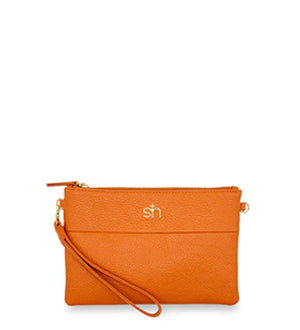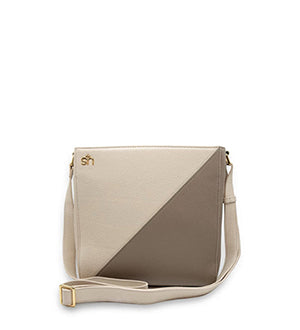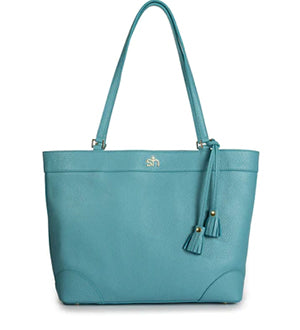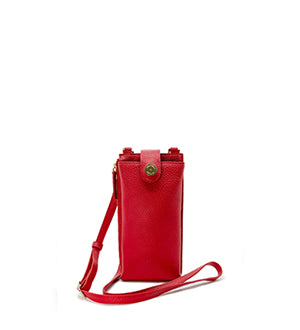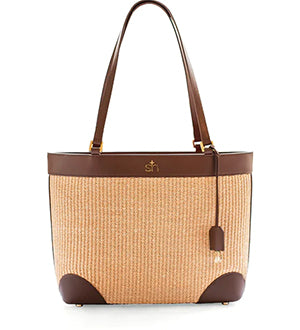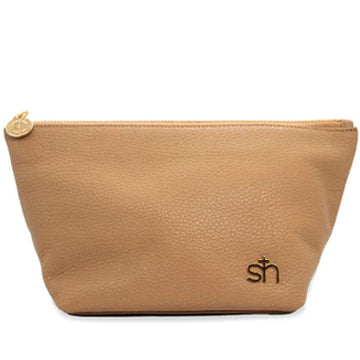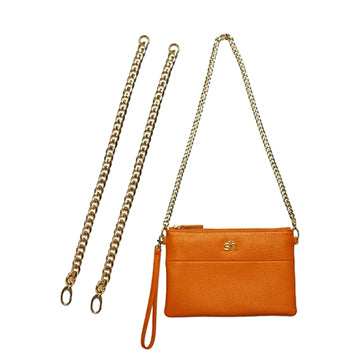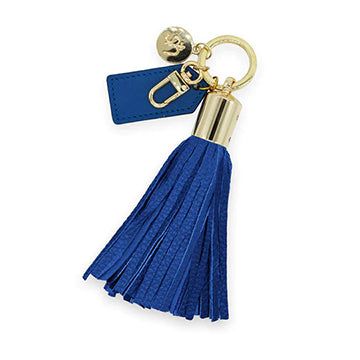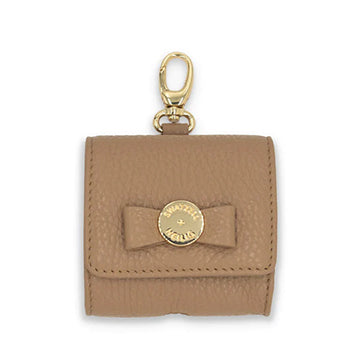When and How to Condition Your Fine Leather Goods

Leather is a luxurious and durable material that has been used for centuries in everything from clothing and accessories to furniture and automobiles. However, like any natural product, leather can degrade over time if not properly cared for. Conditioning your fine leather goods is one of the most important tasks in maintaining their beauty, longevity, and functionality. Whether it's a leather jacket, handbag, pair of shoes, or furniture, knowing when and how to condition your leather items is essential to ensuring they remain in optimal condition.
In this guide, we will explore the importance of conditioning leather, how to determine when it's needed, and the proper techniques to apply leather conditioner for the best results.
Why Conditioning Leather Matters
Leather is a natural material made from animal hides, and as such, it is susceptible to wear and tear. Over time, leather can dry out, lose its sheen, and become stiff or brittle. This is especially true if the leather has been exposed to the elements, such as sunlight, moisture, or extreme temperatures.
Conditioning leather helps to replenish the oils and moisture that are lost over time. This not only prevents cracking and fading but also maintains the leather's softness, suppleness, and overall aesthetic appeal. It also creates a protective barrier against environmental factors like dirt, water, and UV rays.
Regularly conditioning your leather goods ensures they stay looking their best for years, even decades, while prolonging their lifespan. But conditioning too frequently or improperly can lead to adverse effects, so it's important to understand when and how to condition leather.
When to Condition Your Leather Goods
Leather is a resilient material, but it requires care to retain its luster. Here are some key indicators that it's time to condition your leather items:
1. When the Leather Looks Dry or Dull
Leather that has lost its natural sheen is a clear sign that it may need conditioning. When the leather starts to look dry, faded, or lackluster, it's time to apply a conditioner. The conditioner will help replenish the oils and restore the leather's natural glow.
2. After Exposure to Moisture
Water can be a major enemy of leather. If your leather item has been caught in the rain or exposed to moisture, it is essential to condition it afterward. Water can cause the leather to dry out and crack, so a good conditioning treatment can help restore its moisture levels and flexibility.
3. Every 3 to 6 Months
ven if your leather doesn't show signs of dryness, conditioning every 3 to 6 months is a good Regular conditioning helps keep the leather in excellent condition by providing it with the necessary oils and nutrients to stay supple and resilient.
4. After Cleaning or Polishing
Whenever you clean or polish your leather items, conditioning should follow. Leather cleaners can strip away natural oils, and polishing products can leave residues that may dry out the leather over time. Conditioning afterward helps restore any lost moisture and keeps the leather soft and pliable.
5. When Leather Feels Stiff or Cracked
If your leather item feels stiff or begins to show signs of cracking or flaking, it's a sign that it needs conditioning. Dry leather becomes brittle and prone to damage. Regularly applying conditioner will help prevent this and ensure the leather remains flexible and smooth.
6. With Seasonal Changes
Temperature and humidity fluctuations can take a toll on leather. For example, during the winter months, when the air is drier, your leather goods may require more frequent conditioning. Conversely, in humid climates, leather may absorb moisture and become soggy, necessitating a different care routine. Conditioning during seasonal transitions helps maintain the leather's balance.
How to Condition Your Leather Goods
Now that you know when to condition your leather, it's important to learn how to do it properly to avoid any damage. Here are the steps for conditioning leather goods safely and effectively:
Step 1: Choose the Right Leather Conditioner
Not all leather conditioners are created equal, so it's essential to choose the right one for your specific leather goods. Look for a high-quality, pH-balanced leather conditioner that is designed for the type of leather you are working with (e.g., smooth leather, suede, or nubuck). Some conditioners are formulated for specific types of leather items like shoes, bags, or furniture, so be sure to read the labels and select accordingly.
Avoid products with harsh chemicals, artificial dyes, or petroleum-based ingredients, as they can damage or stain the leather over time. Natural oils, such as lanolin, mink oil, or beeswax, are commonly found in high-quality conditioners and provide excellent results.
Step 2: Clean the Leather Surface
Before applying conditioner, you must clean the leather to remove dirt, dust, and other debris. Use a soft, damp cloth or a specialized leather cleaner to gently wipe the surface of the leather. Avoid using too much water, as excess moisture can damage leather. If you're working with a leather item that's particularly dirty, you can use a leather cleaner to lift stains and grime before conditioning.
Step 3: Test on a Small Area First
Before conditioning the entire surface, it's crucial to test the product on a small, inconspicuous area of the leather. This will allow you to ensure that the conditioner does not cause discoloration or adverse effects. Apply a small amount of conditioner to the test area and allow it to absorb for a few minutes. If there is no negative reaction, you can proceed with conditioning the rest of the item.
Step 4: Apply the Conditioner
Using a clean, soft cloth (preferably microfiber), apply a small amount of conditioner to the leather. Work the conditioner into the leather using gentle, circular motions. Focus on one small section at a time, ensuring that the conditioner is evenly distributed across the surface. Be careful not to over-saturate the leatheruse just enough to lightly coat the surface.
Step 5: Let the Conditioner Absorb
Once the conditioner has been applied, allow the leather to absorb the product for several hours or overnight. This gives the leather time to soak in the oils and moisture, restoring its softness and flexibility. Do not rush this process; let the conditioner work its magic at its own pace.
Step 6: Buff and Polish the Leather
After the conditioner has absorbed, use a soft cloth to gently buff the leather. This step helps to remove any excess conditioner and brings out the leather's natural sheen. Buffing can also smooth out any areas where the conditioner may have been applied too thickly. The result should be a supple, glossy finish.
Step 7: Store Properly
After conditioning your leather goods, store them in a cool, dry place away from direct sunlight or extreme temperatures. Keep leather items in a well-ventilated area, as trapped moisture can lead to mold or mildew growth. For bags and shoes, consider using dust bags or shoe trees to maintain their shape.
Additional Tips for Leather Care
- Avoid Over-conditioning: While conditioning is crucial, over-conditioning can lead to the leather becoming overly soft or sticky. Stick to conditioning every 3 to 6 months unless the leather shows signs of dryness or damage.
- Don't Use Household Oils: Avoid using household oils like olive oil or vegetable oil as conditioners. These can stain or cause the leather to become greasy, leading to further damage.
- Store Leather Properly: Keep leather goods in a climate-controlled to prevent them from becoming too dry or too moist.
- Protect from Stains: Consider using a leather protector spray to help guard against stains and water damage. These sprays can provide an extra layer of protection against environmental factors.
Good Feeling
Conditioning your fine leather goods is an essential part of maintaining their appearance and longevity. By understanding when to apply conditioner and following the proper techniques, you can ensure that your leather items remain supple, smooth, and resistant to damage. Whether you're caring for a leather jacket, handbag, or pair of shoes, taking the time to condition them will help preserve their beauty for years to come.
By following these simple yet effective steps, you'll keep your leather goods looking luxurious and feeling as good as new, no matter how much use they endure. Happy conditioning!
You may also be interested in: How to Clean and Protect Your Faux Leather Bags and Shoes ...
Indulge in the craftsmanship of attainable luxury Italian leather. Exclusive designs and impeccable functionality, handcrafted to last a lifetime. Shop the Swatzell + Heilig's fashion collection now!
Powered by flareAI.


